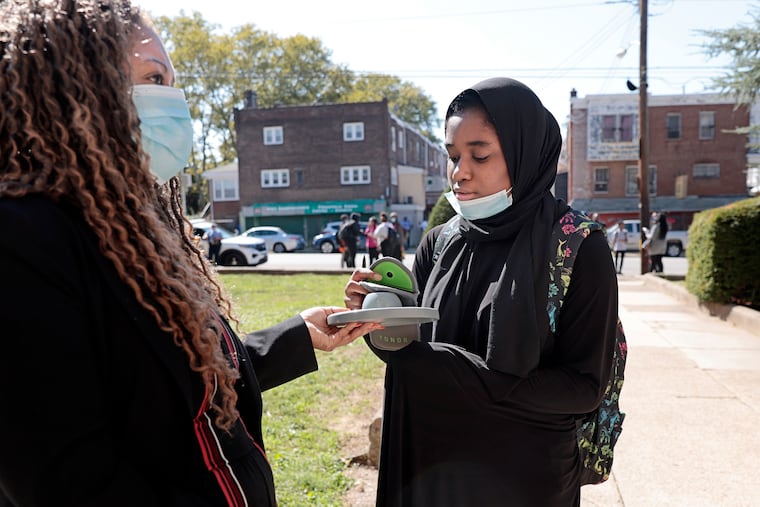Philly schools will vote to spend $5 million to keep students’ cell phones locked up
Officials said the program would be open to all 216 district schools, but schools will still have latitude to decide whether they want to use the Yondr equipment.

The Philadelphia School District wants to create “phone-free schools,” and officials will soon consider spending $5 million to do so.
On Thursday, the school board is scheduled to vote on a five-year contract with Yondr Inc. that would provide all district schools that want them with individual sealed magnetic pouches limiting students’ access to their phones during instructional time.
“With a cell phone-free environment, schools can increase engagement in the classroom so that there can be a substantial increase in student learning as evidenced by benchmarks, constructed responses, on-track percentages, and teacher assessments,” school board documents say. “Furthermore, the absence of cell phones during the day can help lead to less incidents of cyber bullying, reducing the number of students leaving the building and returning illegally by texting their friends, and a reduction in class cuts.”
» READ MORE: To ban or not to ban the cell phone?
District officials said the program would be open to all 216 district schools, but schools will still have latitude to decide whether they want to use the Yondr equipment.
The five-year contract, which authorizes the district to pay up to $5 million but does not require it to spend the full sum, covers staff training, customer service, accessories, and replacement pouches.
Students whose special-education plans require them to use assistive technology will be exempted from using the Yondr pouches, district documents say.
Cell phone use continues to be a thorny issue for schools. Students and many parents say that kids need the phones for safety, especially amid Philadelphia’s gun violence epidemic, and that they’re an inescapable part of modern life. But some school officials have banned them altogether, citing the distraction phones pose to student learning and the mental health consequences of heavy social media use.
Across the country, most public schools do prohibit cell phone usage for non-academic purposes. In the 2019-20 school year, 77% of schools had phone bans of some kind, according to the National Center for Educational Statistics. But the rules are often loosely or inconsistently applied.
Philadelphia has already started using Yondr pouches in some schools. The way they work: Students’ phones remain in their possession the whole school day, but they are locked in the pouches by administrators upon arrival, and unlocked at dismissal.
Overbrook High adopted the pouches in May. The school struggled with climate issues amid the pandemic and the city’s gun violence crisis; technology amplified them, with students using phones to set up fights and harass each other over social media.
Having phones inaccessible to students during the day has been a revelation, principal Kahlila Johnson said.
“It takes away the technology and it supports building relationships,” Johnson said of the school’s move to be cell-free during the school day. Instruction has improved, and so has climate, she said.
Still, the resolution does not sit well with all educators.
Cell phone and social media use can certainly be problematic, said Charlie McGeehan, a teacher at the Academy at Palumbo, a magnet school in South Philadelphia.
“But when we’re on such a limited budget, and we have so many other things to deal with, it feels really very wrong to me to spend $5 million on controlling students and their phones,” said McGeehan, who does not have a prohibition on phones in his classroom but who will intervene if phones are interrupting students’ learning.
Others warned of Yondr pouches’ efficacy.
In 2019, Philadelphia’s Charter High School for Architecture and Design spent $16,000 on a Yondr contract, said Gamal Sherif, who taught science at the school, which closed in 2020. Within a few months, the school abandoned the pouches after students began cutting holes in them or using old phones as decoys. TikTok videos instruct kids how to break them.
“I think it is not a good use of education dollars,” said Sherif, a U.S. Department of Education Teaching Ambassador Fellow. A better use of $5 million, he said, would be “to really pay teacher and other community experts to find the solutions to integrate the technology and not have it be the enemy.”
At West Philadelphia High, principal Marla Travis, who said she found the pouches invaluable, noted that they were about 80% to 90% effective.